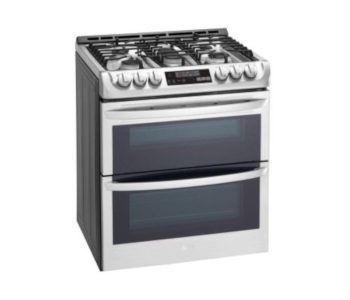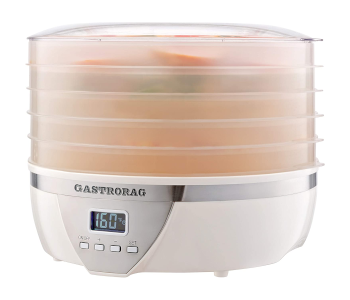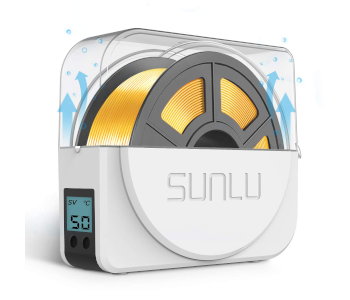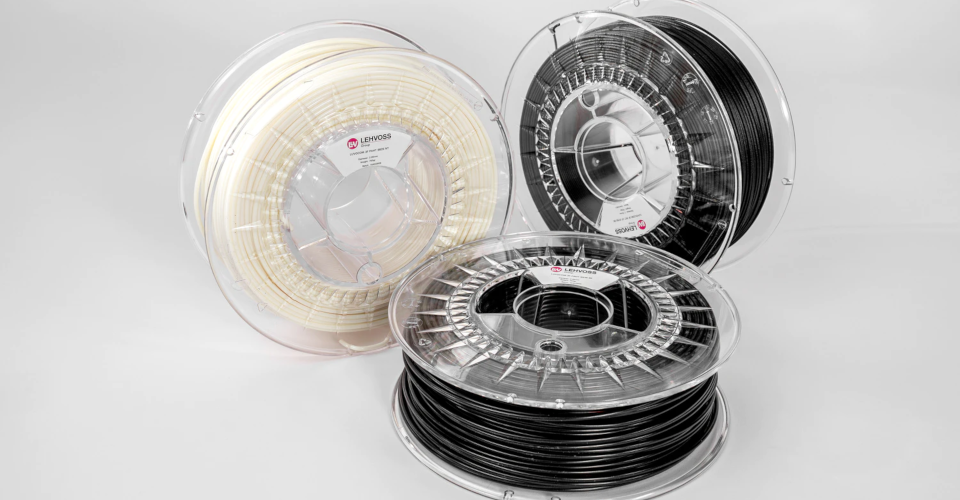Tips on Keeping Your 3D Printing Filament Dry
Extruding plastic into filaments may be the single most influential idea that has helped make 3D printing as popular and mainstream as it is today. 3D printing with filaments is the concept behind the technology of Fused Deposition Modeling – currently the most common 3D printing technology.
However, filaments are not as foolproof as they seem. They are actually very sensitive to storage conditions just because they take up moisture so quickly. What can you do to keep your filaments dry and ready for printing? What are the consequences of printing with a filament that has not been sufficiently dried?
Why is it important that filaments are kept dry?
The reason that it takes a lot of effort to keep filaments dry is that they are naturally hygroscopic. What this means is that they readily absorb moisture from the air and retain this moisture as microscopic water molecules integrated into the plastic’s structural matrix. This is an effect of polymers and water being polar molecules, thus “attracting” each other.
Some filaments are more hygroscopic than others. For instance, Nylon and Polycarbonate are notorious for absorbing moisture extremely rapidly. In most cases, it only takes two to three hours of open exposure to the environment for a filament material to get saturated with moisture.
Regardless of which filament you’re working with, keeping them dry is essential in making sure that your finished 3D printed projects look as good as possible. What are the consequences of printing with a wet filament?
Popping and hissing sounds
The first signs you’ll notice when printing with a wet filament are popping and hissing sounds coming from the hot end, often coupled with visible steam coming out of the nozzle. This is an effect of the water in the filament evaporating when the filament reaches the hot end. This might not be the most problematic consequence of printing with wet filaments, but we don’t imagine this being a good thing for your extruder assembly.
Uncontrolled porosity
When the moisture inside the filament evaporates, it interrupts the normal extrusion performance of the filament. This typically results in under-extrusion or “gaps” in extrusion. This means that layers typically get printed with small gaps or holes in them.
This has a couple of consequences. Since layers are printed incomplete, layer-to-layer adhesion tends to suffer. This makes the finished project very weak in terms of mechanical strength and have pock-marked surfaces. While the latter can still be remedied with sanding and fishing, a weak 3D print will unavoidably fall apart sooner than intended.
Brittle filaments
Keeping your filaments dry isn’t just something you should be doing right before printing – it’s also critical to do it when you store your filaments. A filament inundated with moisture tends to become brittle after a few months.
This is simply because the presence of water facilitates a process called hydrolysis. When water reacts with polymers, they break them down into smaller chains, thus reducing their strength and elasticity. Left unattended, a wet filament will eventually become so brittle that it will break down into smaller segments with the slightest touch and become unusable.
How to keep your 3D printing filaments dry
In this discussion of drying your filaments, we’re going to go over all the stages of handling your filament – storage, preparation, and printing. You don’t necessarily need sophisticated equipment to achieve this goal, but a few of them can help if you can afford them.
Keep them dry during storage

The first step in keeping your filament dry is to keep it dry during storage. The most important thing is to keep them inside an airtight container. A sealed plastic box is ideal, but a zipped storage bag can also work.
More important than the container itself is that the filament is stored with some desiccant. A desiccant is a highly hydrophilic substance that will draw moisture away from its environment. This will help in removing any residual moisture in the filament during storage.
The best desiccant (and probably the cheapest) is silica gel. It’s best to get a 5-lb. container of silica gel and pour in several handfuls in each container. Take note that silica gel takes on a different color when it gets saturated with humidity. Fortunately, saturated silica gel can be regenerated by heating in an oven and reused.
Heat them in an oven

Even if you’ve kept your filament in proper storage, it’s usually prudent to try to dry it further before use. Most people use standard ovens for this just because ovens are a lot more common than special filament dryers.
To dry a filament in an oven, make sure to check the best drying temperature for your specific filament. Going over the ideal temperature can result in the filament getting deformed or even fusing with itself. It’s also important to allow the oven to pre-heat first before placing the filament inside. This is because ovens tend to overshoot the target temperature during the pre-heating step.
Once inside the oven, just leave the filament for three to four hours. This may seem like a very long time, but keep in mind that moisture also needs to creep up from filament that isn’t directly exposed to the temperature of the oven.
Keep them in a dry box while printing
3D printing jobs often take a really long time – up to 24 hours in some cases. This can be problematic if your goal was to keep the filament dry. Left exposed to the atmosphere, a filament will become saturated with moisture again.
Most users come up with a DIY solution for this issue. The filament can be stored inside a sealed dry box during printing with a simple withdrawal point for the filament to pass through. This ‘dry box’ can also have some desiccant inside for good measure.
Use a food dehydrator

Those who do not have ovens at home might have a standard food dehydrator. Food dehydrators are basically sealed chambers where food is dried via heat and constant airflow. They can also be set at specific temperatures, much like an oven. They are also a lot cheaper than ovens or special filament dryers.
Take note that food dehydrators aren’t exactly designed to fit spools of filament. Make sure that your food dehydrator has enough room inside the chamber for the filament, although you might have to remove any internal partitions or racks. Circular dehydrators like this one from Gastrorag probably work best.
Use a filament dryer

There’s a pretty wide range of specially designed filament dryers out there. Most of them are designed to fit a single spool, such as this one by SUNLU. There are also filament dryers that can hold multiple spools.
A filament dryer works almost exactly like a food dehydrator. It has a sealed chamber which can be heated to a set temperature, with convective currents helping to keep the temperature inside the chamber even. Some models also have a built-in hygrometer which constantly measures the humidity inside the chamber, allowing you to check if the filament has been sufficiently dried.
Perhaps the biggest advantage of using a filament dryer instead of a food dehydrator is the fact that it with dedicated inlet holes. This means that you can feed filament directly from the filament dryer to the 3D printer, eliminating the need to come up with a DIY solution.
Filament dryers are a significant investment as they are much more expensive than airtight storage boxes or food dehydrators. However, they are the most reliable method for drying your filaments and keeping them dry during printing. They may be expensive, but you don’t need to buy one for every single filament spool that you own – having two or three in constant rotation should be good enough.
Final thoughts
The issue of keeping filaments dry is one of the more controversial in the 3D printing world – most would say that it’s essential, while there are a few who believe that they are not worth the effort. We tend to play it safe and just exhaust all means to keep our filament dry before printing. After all, there’s some solid science behind this practice.
Admittedly, keeping your filaments dry is a cumbersome process. Not only do you need to have special containers and equipment, but it’s a never-ending struggle that you’ll have to deal with. However, we think that the effort is worth it to bring the best out of your filament and to keep them from going to waste.





